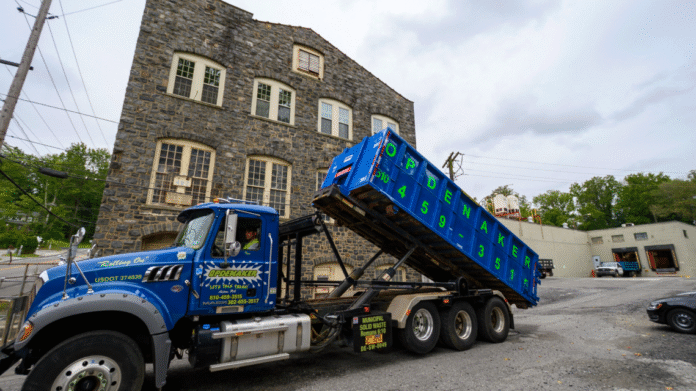Key Takeaways
- Scrap container rentals simplify large cleanouts by providing a centralized and efficient waste solution.
- Proper selection and planning around container size reduces costs and increases safety.
- Compliance with local laws and sustainable disposal practices ensures responsible cleanouts.
Introduction
Taking on a large-scale cleanout can feel daunting, especially when clutter accumulates faster than expected. Whether you’re tackling a home renovation, a basement overhaul, or an office clear-out, a structured approach is vital. Choosing reliable scrap Queens NY, for your rental container needs can dramatically streamline waste management, giving your project order and efficiency from start to finish. These containers provide a straightforward, centralized way to manage debris, helping you organize your space while making disposal efficient and responsible.
By leveraging scrap container rentals, you keep your cleanout site safe and tidy and ensure your cleanup efforts remain compliant with local regulations and environmentally sound. Understanding the nuances of selecting the right container size, knowing how to load it effectively, and following eco-friendly disposal practices will make the process smoother. With the following guide, you’ll discover how to plan, execute, and finish your project with minimal hassle.
Understanding Scrap Container Rentals
Scrap container rentals are essential for managing vast quantities of waste during cleanouts. Available in various sizes, they let you match your container to the specifics of your project, whether decluttering a single room or renovating an entire property. Having a designated spot for debris collection means you cut down on hazards and maintain a cleaner, safer workspace throughout your project’s duration.
These containers also allow you to easily separate recyclables and hazardous waste, streamlining the cleanout and your efforts to stay green. Partnering with a reputable rental provider ensures that your materials are disposed of correctly and responsibly, keeping your conscience clear and your project running efficiently.
Benefits of Using Scrap Containers
The advantages of renting scrap containers for cleanouts extend well beyond convenience:
- Immediate Access:With a container on site, bulky items and smaller debris can be disposed of in real time, eliminating the headache of storing junk or making frequent dump runs.
- Efficiency:Save time and minimize physical effort by centralizing your waste—ideal for tight project schedules and limited manpower.
- Cost-Effectiveness:One-time container rentals can be significantly more affordable than alternative disposal methods, especially when factoring in transportation and labor.
- Eco-Conscious Disposal:Many rental providers prioritize recycling or composting, so your cleanout benefits the environment as much as it benefits you.
Choosing the Right Container Size
Selecting the right container size is crucial for reducing costs and maximizing efficiency. Scrap containers typically come in these standard sizes:
- 10-Yard:Perfect for small-scale jobs, attic cleanouts, or a bathroom remodel.
- 20-Yard:Ideal for medium projects like a basement, garage clear-out, or small demolition work.
- 30-Yard:Suitable for extensive renovations, estate cleanouts, or commercial projects with significant waste volume.
If you’re unsure what size best fits your needs, consult your rental provider; their experience can help you avoid costly over- or under-sizing mistakes.
Planning Your Cleanout Project
Successful cleanouts start long before the first piece of debris is thrown in the container. Begin by estimating the volume and waste your project will generate. This assessment will help determine the right container size and whether you’ll need specialized disposal for electronics or hazardous waste.
- Assess the Scope:Make an inventory of discarded items and materials so you don’t underestimate space needs.
- Book in Advance:Especially during busy seasons, pre-booking ensures you get the size you need, exactly when you need it.
- Site Preparation:Clear a flat, accessible space for delivery and pickup. Ensure nothing blocks the drop-off area, and you’ve secured any necessary permits.
For additional practical advice on construction and demolition disposal tips, readers can refer to reputable resources such as The New York Times’ Home Renovation Guide.
Loading Strategies for Maximum Efficiency
Filling your container strategically will get you the most for your money. Break down bulky items like desks and dressers to fit more in. Always start with heavier, denser materials on the bottom this improves balance, saves space, and prevents lighter objects from being crushed.
- Dismantle Furniture:Reduce items to their smallest components to optimize volume usage.
- Even Distribution:Load consistently across the entire container floor so the weight isn’t overly concentrated on one side.
- Layer Lighter Items:Place bags, old clothes, and small debris on top to fill empty pockets and keep your loads balanced.
If you’re seeking expert tips for packing and organizing your cleanout, a resource like Family Handyman’s Dumpster Rental Guide can be handy.
Adhering to Local Regulations
Always check what’s allowed in your container; violations can result in fines and delays. Many cities require permits for containers placed on public streets, and certain forbidden items like tires, batteries, chemicals, or appliances must be handled differently. Contact your local Department of Sanitation if you need specific guidance on disposal restrictions.
Eco-Friendly Disposal Practices
Sustainability should be at the heart of every cleanout. Many reputable rental providers now offer recycling services, ensuring that metals, plastics, and organics get processed responsibly rather than dumped. Ask your provider about composting yard waste and recycling construction materials. This way, your project stays efficient, supports community eco-initiatives, and minimizes landfill impact.
Conclusion
By incorporating scrap container rentals into your strategy, you can simplify your subsequent significant cleanout. Adequate preparation, the right container size, and conscious loading and disposal keep your cleanout on track and environmentally friendly. With these best practices, you can transform even the largest jobs into manageable, efficient, and responsible projects.

